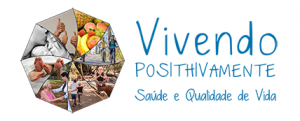Referências consultadas do volume 2
CUIDANDO DO CORPO E DA MENTE
Saúde Mental: Busca pelo Equilíbrio
- ABEGG, Claídes. Hábitos de higiene bucal de adultos porto-alegrenses. Revista Saúde Pública, v. 31, n. 6, p. 586- 93, 1997.
- ANTONI, Michael H. Stress management effects on psychological, endocrinological, and immune functioning in men with HIV infection: empirical support for a psychoneuroimmunological model. Stress, v. 6, n. 3, p. 173-188, 2003.
- BACHION, Maria Márcia et al. Estresse, ansiedade e coping: uma revisão dos conceitos, medidas e estratégias de intervenção voltadas para a prática de enfermagem. Revista mineira de enfermagem, v. 2, n. 1, p. 33-39, 1998.
- BEDNAR R, PETERSON S. Self-esteem: paradoxes and innovation in clinical theory and practice. 2nd ed. Washington, D.C., EUA: American Psychological Association; 1995.
- BONNET, Michael H. Effect of sleep disruption on sleep. Sleep, v. 8, n. 1, p. 11-19, 1985.
- BONNET, Michael H.; ARAND, Donna L. Clinical effects of sleep fragmentation versus sleep deprivation. Sleep medicine reviews, v. 7, n. 4, p. 297-310, 2003.
- BUYSSE, Daniel J.; GANGULI, Mary. Can sleep be bad for you? Can insomnia be good?. Archives of general psychiatry, v. 59, n. 2, p. 137-138, 2002.
- BLASCOVICH J, TOMAKA J. Measures of self-esteem. In: Robinson JP, Shaver PR, Wrightsman LS, eds. Measures of social psychological attitudes series: Vol. 1. Measures of personality and social psychological attitudes. California: Elsevier Academic Press; 1991. p. 115-55.
- BRASIL. Ministério da Saúde. Secretaria de Vigilância em Saúde. Programa Nacional de DST e Aids. Guia para o Cuidador Domiciliar de Pessoas que Vivem com HIV/Aids. Brasília, 100 p, 2010.
- BRASIL. Ministério da Saúde. Secretaria de Vigilância em Saúde. Departamento de DST, Aids e Hepatites Virais. Portal sobre Aids/Qualidade de Vida/Terapias complementares. Acessado em 2016a. Disponível em: http://www.aids.gov.br/.
- BRASIL. Ministério da Saúde. Secretária de Vigilância em Saúde. Departamento de DST, Aids e Hepatites Virais. Recomendações para a prática de atividades físicas para pessoas vivendo com HIV e aids. Ministério da saúde. Brasília, 86 p, 2012.
- ROUWERS, F. M.; LENDERS, J. W. Sleep-disordered breathing and hypertension. The New England journal of medicine, v. 343, n. 13, p. 967-967, 2000.
- BROWN, K.W; RYAN, R.M.; CRESWELL, J.D.. Mindfulness: Theoretical foundations and evidence for its salutary effects. Psychological inquiry, v. 18, n. 4, p. 211-237, 2007.
- BROWN, J.L.; VANABLE, P.A. Cognitive–behavioral stress management interventions for persons living with HIV: a review and critique of the literature. Annals of Behavioral Medicine, v. 35, n. 1, p. 26-40, 2008.
- BROWN, J.L.; VANABLE, P. A. Stress management interventions for HIV-infected individuals: review of recent intervention approaches and directions for future research. Neurobehav HIV Med, v. 95, 2011.
- CALTABIANO, M.L. Main and stress-moderating health benefits of leisure. Loisir et societe/Society and Leisure, v. 18, n. 1, p. 33-51, 1995.
- CARDOSO, G.S.S. Manejo de estresse para pacientes com HIV/AIDS por meio da TCC. Revista Brasileira de Terapias Cognitivas, v. 9, n. 1, p. 26-33, 2013.
- CASTANHA, A.R et al. Conseqü.ncias biopsicossociais da AIDS na qualidade de vida de pessoas soropositivas para o HIV. DST J bras doenças sex transm, v. 18, n. 2, p. 100-07, 2006.
- CASTRIGHINI, C.C et al. Avaliação da autoestima em pessoas vivendo com HIV/AIDS no município de Ribeirão Preto-SP. Texto & contexto enferm, v. 22, n. 4, p. 1049-1055, 2013.
- COLEMAN, Denis. Leisure based social support, leisure dispositions and health. Journal of leisure research, v. 25, n. 4, p. 350, 1993.
- CUNHA, G.H. et al. Hygiene practices for patients with HIV/AIDS. Revista Gaúcha de Enfermagem, v. 35, n. 3, p. 137-144, 2014.
- CHIESA, A.; SERRETTI, A. Mindfulness-based stress reduction for stress management in healthy people: a review and meta-analysis. The journal of alternative and complementary medicine, v. 15, n. 5, p. 593-600, 2009.
- CRESWELL, J. David et al. Mindfulness meditation training effects on CD4+ T lymphocytes in HIV-1 infected adults: A small randomized controlled trial. Brain, behavior, and immunity, v. 23, n. 2, p. 184-188, 2009.
- DAVIM, R.M.B. et al. O lazer diário como fator de qualidade de vida: o que pensa um grupo da terceira idade. Ciência, Cuidado e Saúde, v. 2, n. 1, p. 019-024, 2008.
- DAY, Ryan et al. Self-reported levels of sleepiness among subjects with insomnia. Sleep medicine, v. 2, n. 2, p. 153- 157, 2001.
- DUMAZEDIER, J. Valores e conteúdos culturais do lazer. São Paulo: Sesc, 1980.
- EVANS, Dwight L. et al. Severe life stress as a predictor of early disease progression in HIV infection. American Journal of Psychiatry, v. 154, n. 5, p. 630-634, 1997.
- FERRARA, Michele; DE GENNARO, Luigi. How much sleep do we need?.Sleep medicine reviews, v. 5, n. 2, p. 155- 179, 2001.
- FUGITA RMI. O conhecimento, as crenças, os valores e as práticas de autocuidado das mulheres relativos à higiene íntima e ao corrimento genital [Dissertação]. São Paulo (SP); Escola de Enfermagem da Universidade de São Paulo, 1997. 150p.
- GEIB, Lorena Teresinha Consalter et al. Sleep and aging. Revista de Psiquiatria do Rio Grande do Sul, v. 25, n. 3, p. 453-465, 2003.
- GOODKIN, Karl et al. Life stressors and coping style are associated with immune measures in HIV-1 infection—a preliminary report. The International Journal of Psychiatry in Medicine, v. 22, n. 2, p. 155-172, 1992.
- HARTER S, WHITESELL N.R. Beyond the debate: why some adolescents report stable self-worth over time and situation, whereas others report changes in selfworth. J Pers. 2003; 71(6):1027-58.
- HESTER, E. Kelly. HIV Medications An Update and Review of Metabolic Complications. Nutrition in Clinical Practice, v. 27, n. 1, p. 51-64, 2012.
- HUANG, J.S. et al. Body image in women with HIV: a cross-sectional evaluation. AIDS research and therapy, v. 3, n. 1, p. 1, 2006.
- HUTZ SC, ZANON C. Revisão da adaptação, validação e normatização da escala de autoestima de Rosenberg. Aval Psicol. 2011; 10(1):41-9.
- ISO-AHOLA, Seppo E.; PARK, Chun J. Leisure-related social support and self-determination as buffers of stressillness relationship. Journal of Leisure Research, v. 28, n. 3, p. 169, 1996.
- LEHRER, P. M., Woolfolk, R. L., Sime, W. E. (Eds.). Principals and practice of stress management. New York: The Guilford Press, 2007.
- LIPP, M. E. N. Estresse emocional: A contribuição de estressores internos e externos. Revista de Psiquiatria Clínica, v.28, n. 6, p.347-349, 2001.
- LIPP, M.E.N. Mecanismos neuropsicofisiológicos do stress: teoria a aplicações clínicas. Casa do Psicólogo, 2003.
- LIPP, M. E. N., MALAGRIS, L. E. N., & NOVAIS, L. E. Stress ao longo da vida. São Paulo: Ícone, 2007.
- LOPES, M.V.de O.; FRAGA, M.de N.O. Pessoas vivendo com HIV: estresse e suas formas de enfrentamento. Revista Latino-Americana de Enfermagem, v. 6, n. 4, p. 75-81, 1998.
- LINDEGAARD, B. et al. The effect of strength and endurance training on insulin sensitivity and fat distribution in human immunodeficiency virus-infected patients with lipodystrophy. The Journal of Clinical Endocrinology & Metabolism, v. 93, n. 10, p. 3860-3869, 2008.
- MARTINEZ, D. Prática de medicina do sono. São Paulo: Fundo editorial Bik, 1999.
- MENEZES, C. B; DELL’AGLIO, Débora Dalbosco. Meditation effects on scientific research in Psychology: literature review. Psicologia: Ciência e Profissão, v. 29, n. 2, p. 276-289, 2009.
- MULLER, M.R; GUIMARÃES, Suely Sales. Sleep disorders impact on daily functioning and life quality. Estudos de Psicologia (Campinas), v. 24, n. 4, p. 519-28, 2007.
- NAITOH P. Circadian cycles and restorative power of naps. In: Johson LC, Tepas DI, Colquhoum WP, Colligan MJ eds Biological rhythms, sleep and shift work. Advances in Sleep Research, v. 7, p: 553-80, 1981.
- NEVES N. A. R. Técnicas de respiração para a redução do estresse em terapia cognitivo-comportamental.Arquivos Médicos dos Hospitais e da Faculdade de Ciências Médicas da Santa Casa de São Paulo, v. 56, n. 3, p.158-68, 2011.
- NIC. Bulechek GM et al. Classificação das Intervenções de Enfermagem. Elsevier, 6ª edição, 2016.
- NYKLÍCEK, I. et al. Mindfulness-based stress reduction and physiological activity during acute stress: A randomized controlled trial. Health Psychology, v. 32, n. 10, p. 1110, 2013.
- O’ BRIEN, Kelly K.; NIXON, Stephanie A. Evidence-based management of an individual living with HIV. Physiotherapy Canada, v. 62, n. 3, p. 202-205, 2010.
- PONTES, A.D. M et al. Noopsicossomática em Pessoas Vivendo com HIV/AIDS: Evidências de um Modelo Explicativo. Psico, v. 46, n. 1, p. 129-138, 2015.
- PONDÉ, M.P; CAROSO, Carlos. Lazer como fator de proteção da saúde mental. Revista de Ciências Médicas, v. 12, n. 2, 2012.
- RAKEL D. Integrative medicine. 2nd ed. Philadelphia: Saunders;1264p,2007.
- RAJABIUN, Serena et al. Patient perspectives on improving oral health-care practices among people living with HIV/AIDS. Public Health Reports, p. 73-81, 2012.
- REIS, R. K. et al. Qualidade de vida, aspectos sociodemográficos e de sexualidade de pessoas vivendo com HIV/AIDS. Texto & Contexto-Enfermagem, v. 20, n. 3, p. 365-374, 2011.
- REIMÃO, R. (1996). Sono: estudo abrangente (2a. ed.). São Paulo: Atheneu.
- RODRÍGUES-BARRIONUEVO AC, RODRÍGUES-VIVES MA, BAUZANO-POLEY E. Revisión de los transtornos del sueno en la infância. Revista Neurologia Clinica, v. 1, p. 150-171, 2000.
- SÁNCHEZ E, BARRÓN A. Social psychology of mental health: the social structure and personality perspective. Span J Psichol. 2003; 6(1):3-11.
- SANTINI, Rita de Cássia Giraldi. Dimensões do lazer e da recreação questões sociais espaciais, sociais e psicológicas. São Paulo: Angelotti, 1993.
- SÁNCHEZ E, BARRÓN A. Social psychology of mental health: the social structure and personality perspective. Span J Psichol. 2003; 6(1):3-11.
- SATTLER, Fred R. et al. Metabolic effects of nandrolone decanoate and resistance training in men with HIV. American Journal of Physiology-Endocrinology and Metabolism, v. 283, n. 6, p. E1214-E1222, 2002.
- SEIDL, Eliane Maria Fleury; MACHADO, Ana Cláudia Almeida. Bem-estar psicológico, enfrentamento e lipodistrofia em pessoas vivendo com HIV/AIDS. Psicologia em estudo, v. 13, n. 2, p. 239-247, 2008.
- SBICIGO BJ, BANDEIRA RD, DELL’AGLIO DB. Escala de autoestima de Rosenberg (EAR): Validade fatorial e consistência interna. Psico – USF. 2010; 15(3):395-403.
- SCHULTHEISZ, T. S. V; APRILE, Maria Rita. Autoestima, conceitos correlatos e avaliação. Revista Equilíbrio Corporal e Saúde, v. 5, n. 1, 2015.
- SEAWARD, L. B. Managing stress: Principles and strategies for health and well being (2nd. ed). Londres: Jones and Bartlett Publishers, 1999.
- SIEGEL, Pamela; BARROS, Nelson Filice. Religious Therapeutics, Body and Health in yoga, ayurveda, and tantra. Ciência & Saúde Coletiva, v. 12, n. 6, p. 1747-1748, 2007.
- SOUZA, H.F; MARQUES, D.C. Benefits of aerobic and/or resistance training in HIV-positive patients: a systematic review. Revista Brasileira de Medicina do Esporte, v. 15, n. 6, p. 467-471, 2009.
- STORES, Gregory. A clinical guide to sleep disorders in children and adolescents. Cambridge University Press, 2001.
- SPIEGEL, Karine; LEPROULT, Rachel; VAN CAUTER, Eve. Impact of sleep debt on metabolic and endocrine function. The Lancet, v. 354, n. 9188, p. 1435-1439, 1999.
- SHEPHARD, Roy J.; SHEK, Pang N. Interactions between sleep, other body rhythms, immune responses, and exercise. Canadian journal of applied physiology, v. 22, n. 2, p. 95-116, 1997.
- SBD. Sociedade Brasileira de Dermatologia. Portal da Sociedade Brasileira de Dermatologia. Cuidados gerais com pele, cabelos e unhas. Acessado em: 2016, agost, 20. Disponível em: http://www.sbd.org.br/publicacoes/.
- TINSLEY, Howard EA et al. A system of classifying leisure activities in terms of the psychological benefits of participation reported by older persons. Journal of Gerontology, v. 40, n. 2, p. 172-178, 1985.
- WHOQOL GROUP et al. The World Health Organization quality of life assessment (WHOQOL): position paper from the World Health Organization. Social science & medicine, v. 41, n. 10, p. 1403-1409, 1995.
- WHO. WORLD HEALTH ORGANIZATION. Basic documents. 43rd Edition. Geneva, World Health Organization:1, 2001.
- WHO. WORLD HEALTH ORGANIZATION. Strengthening mental health promotion. Geneva, World Health Organization (Fact sheet, No. 220), 2001a.
- WHO.WORLD HEALTH ORGANIZATION et al. Promoting mental health: Concepts, emerging evidence, practice: Summary report. 2004.
- ULLA, Sara; REMOR, Eduardo Augusto. Psychoneuroimmunology and HIV infection: fact or fiction?. Psicologia: Reflexão e Crítica, v. 15, n. 1, p. 113-119, 2002.
- VIGARELLO, G. A história da Beleza. Rio de Janeiro: Ediouro, 2005.
- YARASHESKI, Kevin E. et al. Resistance exercise training reduces hypertriglyceridemia in HIV-infected men treated with antiviral therapy. Journal of Applied Physiology, v. 90, n. 1, p. 133-138, 2001.
- ZAMMIT, Gary K. et al. Quality of life in people with insomnia. Sleep: Journal of Sleep Research & Sleep Medicine, 1999.





